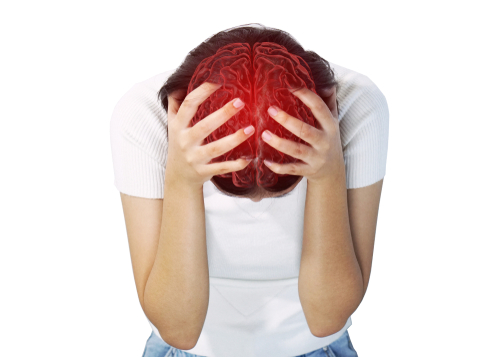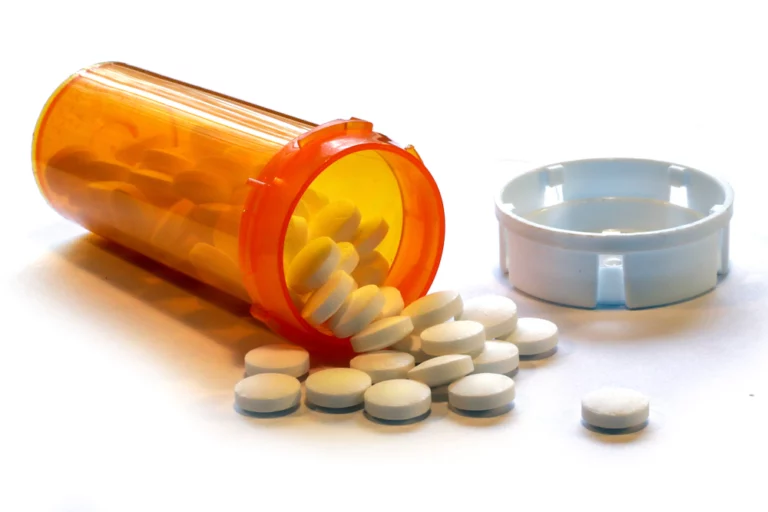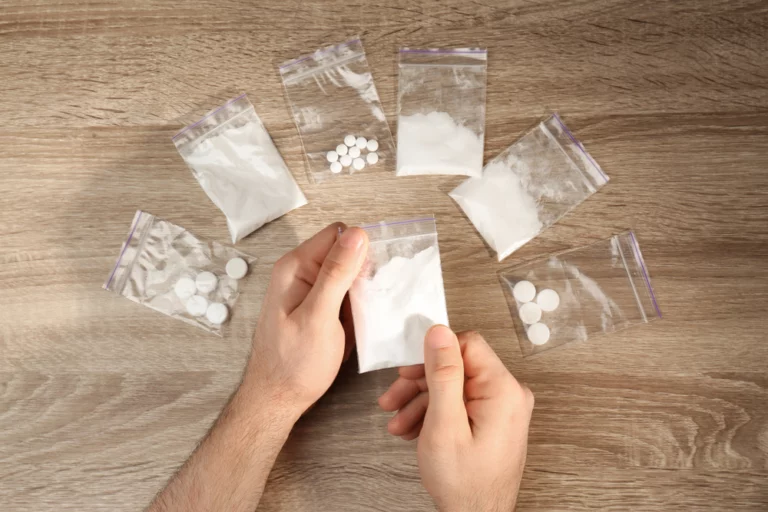How Childhood Trauma Can Lead To Addiction
Addiction is an isolating mental health disorder and substance use typically worsens and acts as a “coping mechanism” for the loneliness it induces. But this loneliness and need for instant, potent relief from substances can stem from our earliest memories, especially traumatic childhood experiences.
One study found that 77% of people being treated for substance use disorder and PTSD experienced at least one traumatic experience as a child. Additionally, the Adverse Childhood Experience scale indicates that the higher someone ranks on the scale, between 1 and 10, the greater the risk of alcohol and drug use in adulthood.
Without a doubt, childhood trauma is one of the leading causes of addiction in adulthood. Once you finish this article, you’ll know how trauma corresponds with addiction and how it’s not an untreatable condition.
Key points of this article include:
- Trauma can lead to long-term mental health issues, including anxiety, panic, and post-traumatic stress disorder.
- Trauma can also lead to depersonalization and numbness, which may similarly increase vulnerability.
- Mental health conditions, especially undiagnosed disorders, can lead to self-medicating.
Connect With Us Now
Reach out to us now for immediate support, or let us know the best time to contact you through our confidential callback service. Your journey to healing is just a conversation away.
What Is Childhood Trauma?
Describing what trauma is or how it affects people isn’t easy. Trauma affects everyone differently and isn’t isolated to certain experiences but how the individual perceives, remembers, and visualizes the events. As adults, we can deal with stressful situations more effectively, but as children and adolescents, we lack the skills and mindsets we use later in life. These events typically affect mental, emotional, physical, spiritual, and social well-being.
Types of Childhood Trauma
The most common traumatic experiences include:
- Physical and emotional neglect
- Verbal, psychological, sexual, and physical abuse
- Grief and loss
- Domestic violence
- Terminal medical conditions
- Witnessing and living with family members who use substances or struggle with mental health disorders

Signs of Trauma
Even though your subconscious might suppress memories or create excuses to cover them up, your body and mind can find a way to release them. Common signs of trauma include:
- Mood shifts
- Erratic or manic behavior
- Innapproiate or excessive emotional expressions
- Constant anxiety, fear, or nervousness
- Constant irritation or agitation
- Shame or lack of confidence
- Eating disorders (EDs)
- Avoiding triggering situations, either consciously or subconsciously
- Reliving and visualizing past events
- Interpersonal issues with friends, coworkers, or family members
- Vague, suppressed memories, and dissociation
- Romantic issues
Heads Up! April is National Child Abuse Prevention Month. Take the time to look into awareness campaigns and initiatives aimed at educating communities and families about recognizing and preventing child abuse.
How Trauma Induces Long-lasting Stress Hormones
At the moment, traumatic experiences release large amounts of stress because your body and mind are viewing a situation as physically or emotionally dangerous. To protect yourself, your body releases cortisol and adrenaline, which activates your fight or flight response, enlarges your eye pupils to increase your perception, raises blood pressure and heart rate, and increases your sense of alarm.
In an emergency, these hormones can save your life. But in high concentrations, they become toxic, work against us, and can become stored in the subconscious. Soon, your body won’t be able to distinguish between emergencies and triggered memories.
The biological explanation behind this traumatic memory storage lies with the limbic system and its neural pathways. Repeated stressful situations chronically activate the hypothalamic-pituitary-adrenal (HPA) axis, which controls how your body responds to stress using your metabolism, immune system, and autonomic nervous system (which is why stress might make your stomach feel sick). This constant trauma chemically leads to continuous arousal, anxiety, hypervigilance, alertness, and multiple mental health and physical disorders.

How Childhood Trauma Affects The Adult Brain
The limbic system is made up of five parts that are directly targeted by traumatic experiences: the amygdala, hippocampus, thalamus, hypothalamus, and nucleus accumbens.
The Amygdala:
- Purpose: The amygdala detects and reacts to physical and emotional threats with the appropriate responses, such as releasing epinephrine (adrenaline). It’s also responsible for giving meaning to emotions, and how we link experiences with emotions, such as joy when we listen to music we like and disgust when we dislike.
- Trauma’s Effects: Trauma makes it difficult for the amygdala to be calmed after exposure to threats, which can lead to constant feelings of fear induced by anything from associated sights or sounds.
The Hippocampus
- Purpose: The hippocampus, the brain’s learning center, is responsible for learning new information and forming memories. It’s also highly susceptible to stress.
- Trauma’s Effects: Studies have shown that individuals with childhood abuse can have 12% smaller left sides of their hippocampus than those who didn’t. This can also lead to individuals experiencing more negative flashbacks, difficulty recalling memories, and fear of trusting others or even sleeping.
The Thalamus
- Purpose: the thalamus acts as the relay station for the brain, processing information and sending it to the part of the brain with the appropriate function. The thalamus subconsciously alerts areas of your brain before you’re consciously aware of the threat.
- Trauma’s Effects: Traumatic childhood experiences can create immediate reactions to certain stressors and induce the symptoms mentioned above. This can result from various stimuli, including smells, sounds, pictures, people, etc.
The Hypothalamus
- Purpose: The hypothalamus is responsible for blood rate, heart rate, body temperature, appetite, sleep cycle, thirst, sex drive, and emotional responses.
- Trauma’s Effect: Childhood trauma can increase activity in the hypothalamus and induce a constant state of stress. This can lead to “black and white” thinking and emotional responses to these functions. For example, some victims of childhood abuse have extreme and heightened or non-existent and diminished sex drives.
The Nucleus Accumbens
- Purpose: An internal part of the brain’s reward system, the nucleus accumbens, regulates the feelings of pleasure and satisfaction after we do something we enjoy. This also relates to dopamine, a neurotransmitter commonly affected by stimulants like methamphetamine and depressants like cannabis.
- Trauma’s Effect: Victims of childhood trauma can use substances like meth or cannabis to cope with their negative memories and the feelings they induce. These behaviors hijack the brain’s reward system and make it hard to withdraw from coping mechanisms that provide instant physical, emotional, or mental relief. Other examples of negative coping mechanisms include self-harm, eating disorders, and escapism.
How Does Childhood Trauma Lead To Addiction?
Childhood trauma can leave lasting effects, and the immediate psychological relief provided by stimulants and depressants can act as a coping mechanism.
- Cognitive abnormalities: Studies have shown that the earlier these traumatic events occur in our lives, the more damage they have on the immune system, emotional regulation skills, executive dysfunction, and cognitive development, and can increase the risk of neurodegenerative diseases (Parkinson’s, multiple sclerosis, Alzheimer disease, etc.).
- The need for relief: Trauma can also disrupt the regulation of oxytocin, the hormone that kicks in during emotional and physical intimacy with others, and serotonin, the hormone that regulates mood. Individuals raised by abusive parents, siblings, or guardians can struggle to form healthy attachments and trust in relationships as adolescents and adults, further exacerbating their susceptibility to addiction as they may seek solace and validation through substance abuse or other addictive behaviors, like gambling, sex addiction, exercising, and other abusive relationships.
- The need for connection: Moreover, trauma can induce depersonalization and emotional numbness as internal coping mechanisms, further exacerbating vulnerability to addiction. These states of dissociation can disconnect individuals from their emotions and surroundings, leading them to seek external sources of pleasure or relief, such as alcohol, cocaine, meth, and other drugs that increase their bodily senses.
- The need to escape: Escapism is a common coping mechanism for trauma. Depressants and hallucinogens, such as cannabis, opioids, and psilocybin, can act as a way to pull away from life and slip into a state of avoidance. This can also apply to video games, books, television shows, and social media.
Take Our Addiction Quiz for Recovery Insights
Dual Diagnosis: Co-occurring PTSD And A Substance Use Disorder
Individuals who resort to self-medication can develop a substance use disorder alongside their existing anxiety, depression, or post-traumatic stress disorder. This is known as co-occurring disorders, comorbidity, and dual diagnosis. Using addictive substances as a form of self-medication doesn’t effectively address or resolve childhood trauma. Instead, it often worsens symptoms of mental health disorders and can contribute to developing drug tolerance. Soon, someone needs more of a specific substance to find any form of relief, which can lead to a fatal overdose.
Are You Covered For Treatment?
Oasis Recovery Center partners with numerous private insurance providers. Our team is committed to assisting you in quickly and effortlessly verifying your insurance coverage for treatment.
Trauma-Informed Addiction Treatment At Oasis Recovery Center
If you or a loved one is struggling with substance abuse, contact Oasis Recovery Center in Asheville, North Carolina. Our trauma-informed and licensed clinicians can help individuals struggling with substance use, mental health disorders, and their overlapping symptoms. We don’t marginalize or use impersonal treatment methods at our center, and we’re dedicated to ensuring each client who walks through our doors and asks for help feels catered toward, cared for, and understood. Childhood trauma isn’t something that needs to define or weigh you down forever. Call, email, or complete an application form today to get started today.










